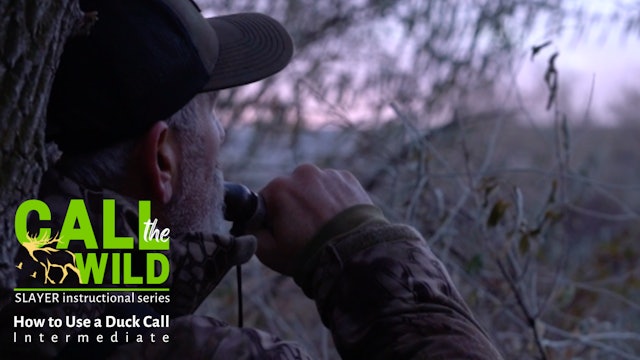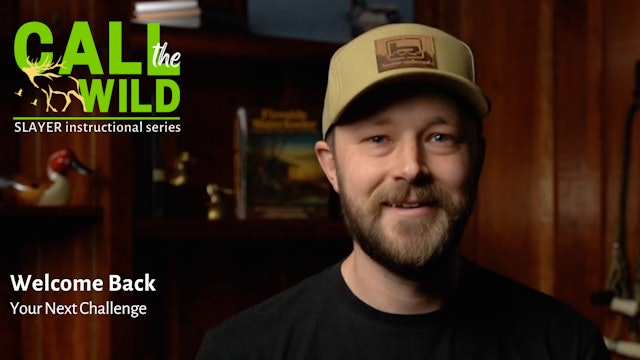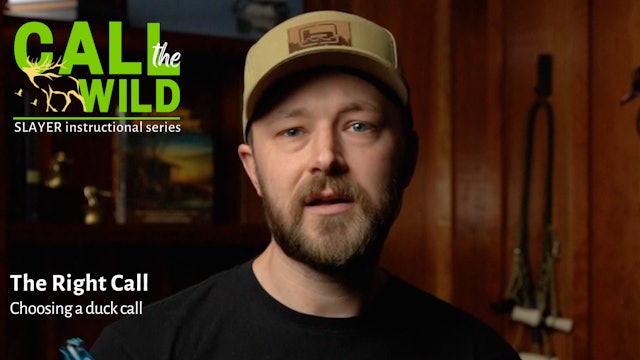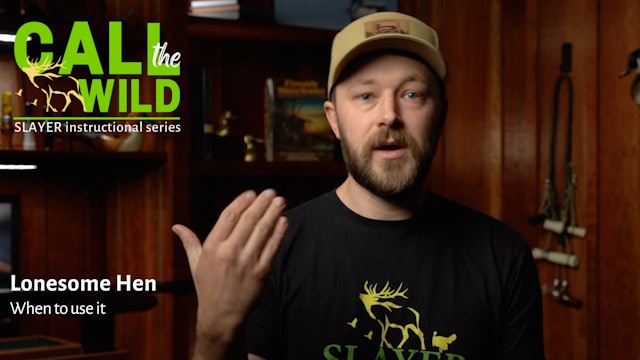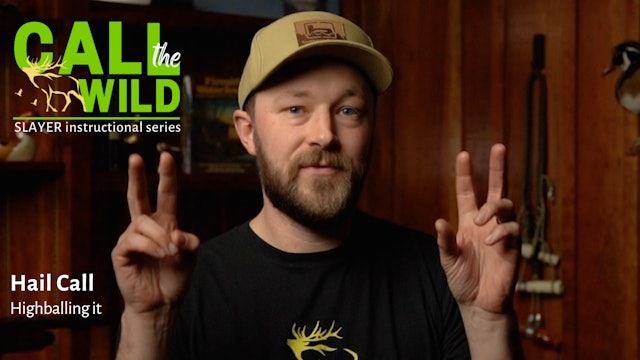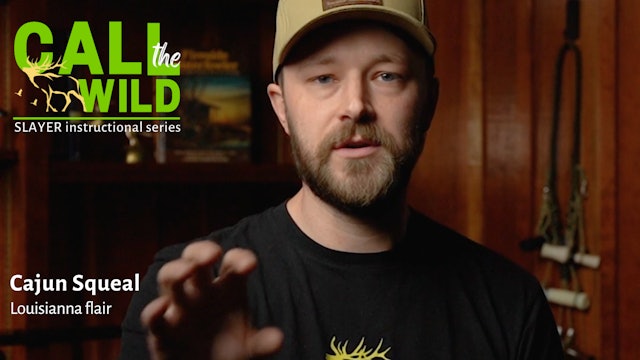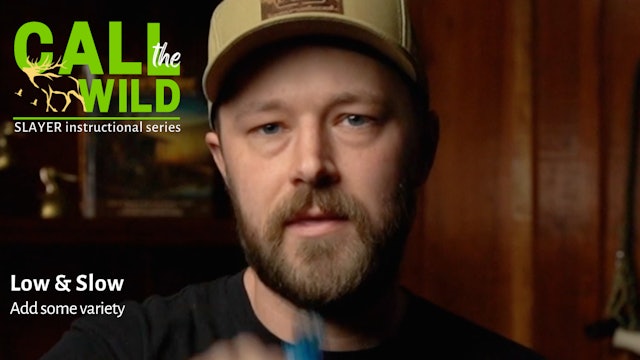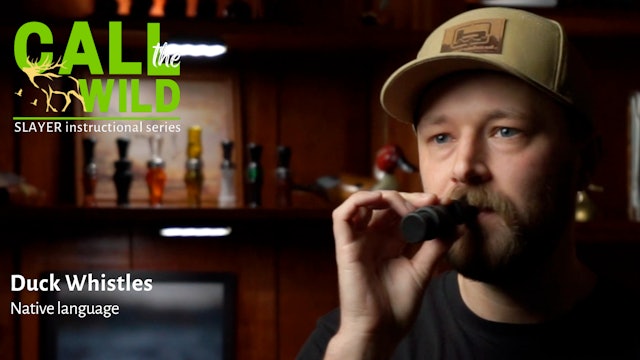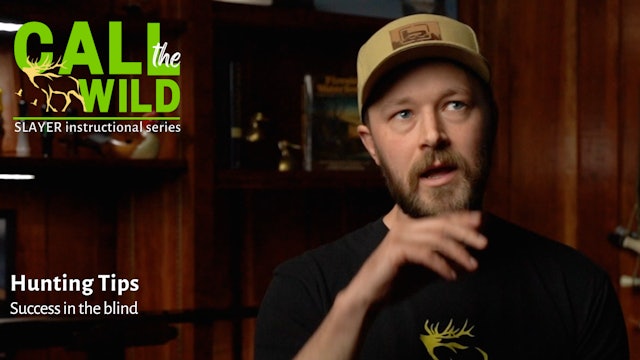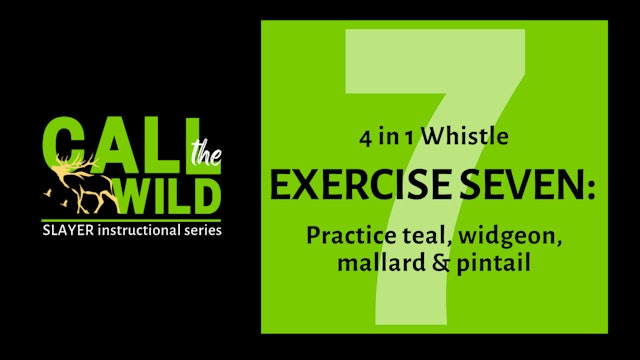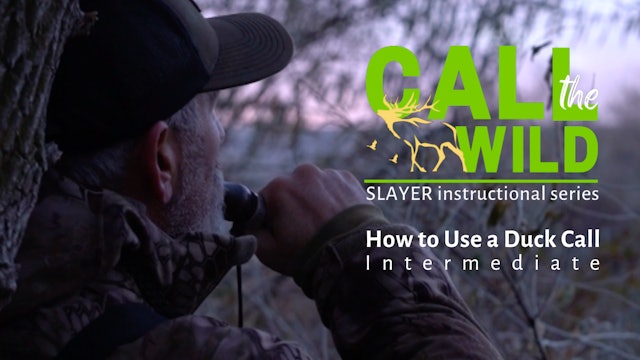How to Use a Duck Call, Intermediate
23 Episodes
For those who have completed the introductory course, welcome! In this course, Matt Carey walks you through the ins and outs of the following calls: the lonesome hen, the comeback call, the hail call, the cajun squeal, and the bouncing hen. In addition to learning a new set of practical skills, you’ll also learn how to finesse your calling with real-life hunting tips on how to find success behind the blind. Are you ready to put some hours in? Let’s get to it!
-
Episode 1: Welcome Back - Here’s your next challenge
Episode 1
Welcome back to Call the Wild. In this course, we will be discussing intermediate duck-calling skills as well as some practical knowledge on how to use all that you’ve learned so far in the field. Before watching this course, please ensure you’ve completed our “Basics of Calling” course so that y...
-
Episode 2: The Right Call - Choosing a duck call
Episode 2
Choosing the right duck call is one of the most important steps before embarking on your duck calling journey. Matt Carey gives you his top recommendations.
-
Episode 3: Lonesome Hen Call - When to Use It
Episode 3
In this episode, you’ll practice the lonesome hen call — a riff off of the basic quack. When the birds have made a few passes and are seemingly committed to your setup, the lonesome hen call is a great way to seal the deal.
-
Episode 4: Comeback Call - A Last Ditch Effort
Episode 4
In episode 4, Matt Carey introduces the comeback call. The ducks have passed a few times, have lost interest, or are circling wider and wider. What do you do? The comeback call is your last-ditch effort when working a group of birds.
-
Episode 5: Hail Call - Highballing Far Away Birds
Episode 5
In episode 5, you’ll practice the hail call, also known as the highball. When the birds are 200 yards off, this call can make the birds look your way. You’ll need a good amount of air pressure to hit and stay on a not-so-pretty note.
-
Episode 6: Cajun Squeal - Add in Some Louisiana Flair
Episode 6
In Episode 6, you’ll learn the ins and outs of the cajun squeal. For this more advanced technique, you’ll add a little Louisiana flair to your calling — a great way to incorporate some variation in your calling.
-
Episode 7: Bouncing Hen - Great on a Big Feed or Refuge
Episode 7
In episode 7, Matt Carey illustrates the bouncing hen. A simple technique to master. The bouncing hen is a great sound on a big feed or refuge, but shouldn’t be used often.
-
Episode 8: Calling Dynamics - It’s Time to Talk Volume
Episode 8
It’s time to finesse your calling. In episode 8, Matt talks about volume — and how to control your volume to get the birds to respond. From highs to lows…loud and quiet, control is key.
-
Episode 9: Low & Slow - Adding Variety to Your Calling Speed
Episode 9
In episode 9, you’ll learn how to break the muscle memory you’ve worked so hard to master. A great caller doesn’t sound the same every time. In this class, you’ll focus on adding variety to your calling speed. You’ll also learn how to shake up your cadence pitch.
-
Episode 10: Chop Chop - When Faster is Better
Episode 10
The Chop Chop calling technique is a great tool to use on waning flocks. In this variation of a 5-note cadence, you’ll be speeding things up to turn the birds your way! In this class, you’ll focus on making your quacks short with hard stops that separate each note from the last.
-
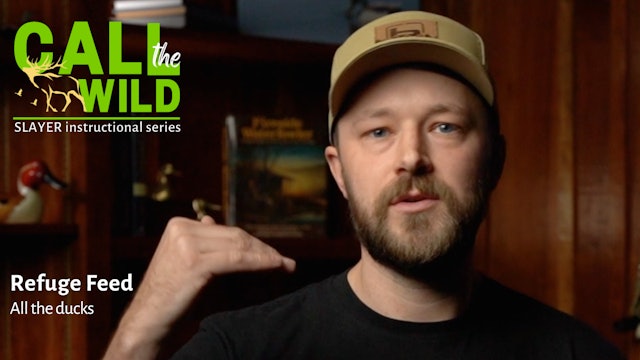 02:01Episode 11
02:01Episode 11Episode 11: Refuge Feed - The Sound of Many
Episode 11
Calling all ducks! It’s time to learn how to sound like a lot of ducks all at once. In this episode, you’ll be mixing things up with quacks and cadences. It’s time to put your new calling skills to the test.
-
Episode 12: Reaction vs Confidence - What Call to Use & When
Episode 12
Let’s talk about the why behind the call. In this episode, you’ll learn when to use the different calls you’ve worked so hard to master. From getting birds to react to keeping the party going, it’s important to know when to make noise, what noise to make, and when a little peace and quiet may act...
-
Episode 13: Group Calling - When to Lead and When to Support
Episode 13
Too many cooks in the kitchen? Let’s discuss the importance of teamwork with a group of callers, as well as effective ways to work together for a successful hunt.
-
Episode 14: Why you should have a duck whistles on your lanyard
Episode 14
Teal. Wigeon. Pintail. Mallard. In episode 14, you’ll learn why you should have a whistle on your lanyard. You’ll also practice speaking to ducks in their native tongue.
-
Episode 15: Hunting Tips - Success in the Blind
Episode 15
Extra! Extra! Learning the ins and outs of each calling technique is only part of finding success behind the blind. You’ll also want to know what skill to use and when. In episode 15, you’ll learn a few practical tips to help you bag more birds.
-
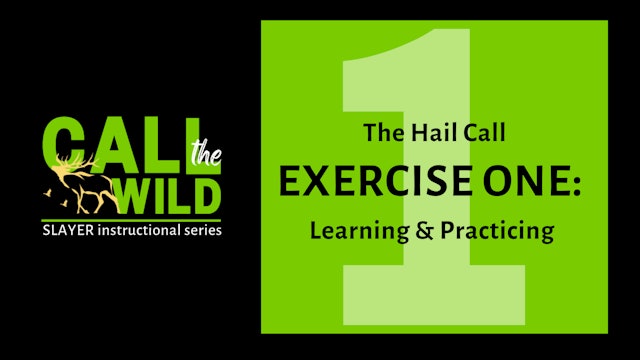 02:54Episode 16
02:54Episode 16Exercise One: Practice the Hail Call
Episode 16
-
 03:11Episode 15
03:11Episode 15Exercise Two: Practice the Cajun Squeal
Episode 15
Master the art of the cajun squeal
-
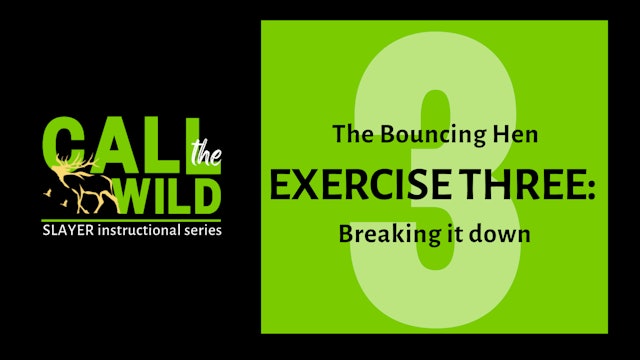 05:38Episode 18
05:38Episode 18Exercise Three: The Bouncing Hen
Episode 18
Breaking down the bouncing hen
-
Exercise Seven: Practice Slayer's 4 in 1 Duck Whistle
Episode 22
Practice teal, widgeon, mallard, and pintail vocalizations
-
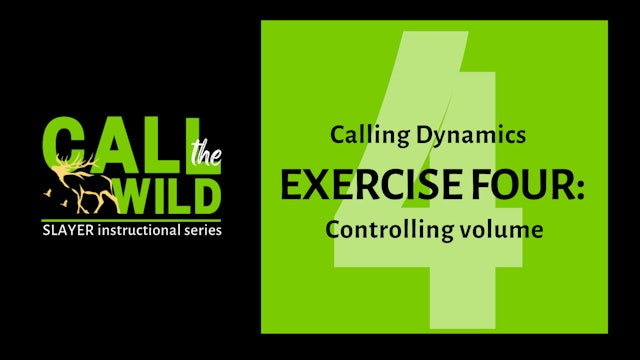 03:32Episode 17
03:32Episode 17Exercise Four: Practice Calling Dynamics
Episode 17
Practice controlling volume
-
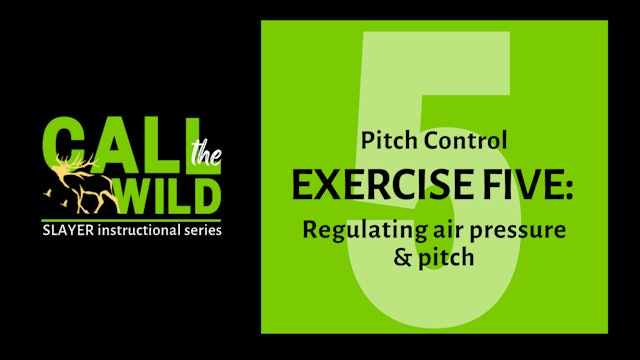 02:40Episode 20
02:40Episode 20Exercise Five: Practice Pitch Control
Episode 20
Practice controlling pitch and regulating air pressure
-
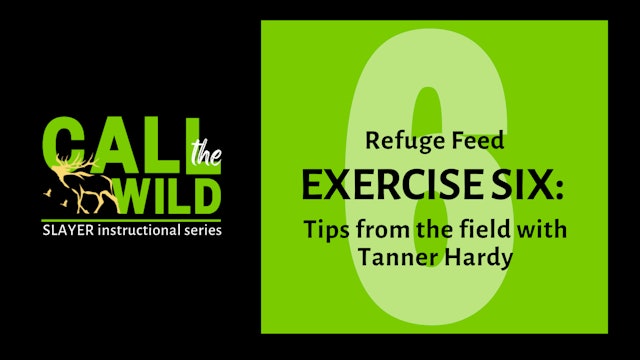 02:51Episode 21
02:51Episode 21Exercise Six: Practice the Refuge Feed
Episode 21
Practice putting what you've learned by stringing your quacks and cadences together.
-
Call the Wild: Intermediate, How to Use a Duck Call
In the intermediate course, you'll embark on 15 new lessons where you'll learn the ins and outs of specific calls: the lonesome hen, the comeback call, the hail call, the cajun squeal, and the bouncing hen.

